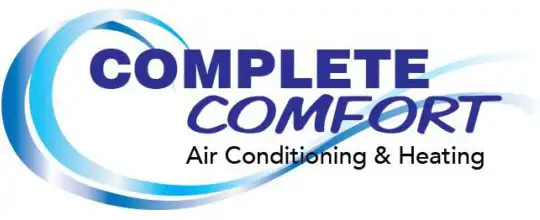Air Conditioning Services in Jupiter, FL
AC Maintenance
Schedule your AC maintenance with Complete Comfort
AC Repair
The one-stop-shop for air conditioning repairs in Jupiter
AC Replacement
We specialize in AC installation, service and repairs
Air Ducts
Call our skilled technicians to service your air ducts
Duct Cleaning
Are you breathing clean air? Call Complete Comfort today
Ductless AC
Our ductless systems are seamlessly integrated & unobtrusive
IAQ
Breathe in. Breathe out. Feel safe at home. Call us!
Smart Thermostats
Experience ultimate control with a smart thermostat!
VRV/VRF Systems
Our VRV/VRF systems can keep your Jupiter home comfortable
Zoning Systems
Personalize heating and cooling in your house
You need a team that understands your unique cooling needs and provides accurate, transparent services every time. Complete Comfort is the best of the best, and we’ll prove it to you! If you’re in need of high-quality air conditioning services in Jupiter, FL, then you know who to turn to!
Signs Your Air Conditioner Needs to be Replaced
Determining when to replace your air conditioning (AC) unit is crucial for maintaining a comfortable indoor environment. Here are some signs that indicate it might be time to replace your AC unit:
- Old Age (10-15 Years)
- Frequent Repairs
- Decreased Efficiency
- Uneven Cooling
- Strange Noises
- Inadequate Cooling
Is It Time to Repair Your Cooling Unit?
Are you wondering if it’s time to repair your air conditioner in your Jupiter, FL home? In a hot and humid climate like this, you can’t afford to be without AC for long! Here are some key signs that may indicate a need for repairs sooner rather than later:
- Insufficient Cooling
- Uneven Cooling
- Strange Noises
- Foul Odors
- Frequent Cycling On and Off
- High Energy Bills
Benefits of Air Conditioning Maintenance in Jupiter, FL
Air conditioning maintenance offers several benefits that contribute to the overall efficiency, longevity, and performance of your cooling system in Jupiter, FL. Here are some key advantages of regular cooling maintenance:
- Improved Energy Efficiency
- Extended Lifespan
- Enhanced Cooling Performance
- Prevention of Costly Repairs
- Improved Indoor Air Quality
- Prevention of Breakdowns During Peak Seasons
- Optimized Thermostat Settings
- Preservation of Manufacturer’s Warranty
For residents in Jupiter, FL, where air conditioning is crucial for year-round comfort, regular HVAC service is important to ensure reliable and efficient cooling. It’s recommended to schedule professional air conditioning maintenance at least once a year to keep your system running smoothly. And, if you notice any signs of visible wear and tear or other problems, schedule a repair or replacement with the Complete Comfort experts right away.
Why Choose Complete Comfort?
For numerous years, individuals have consistently chosen us for air conditioning services in Jupiter, FL for several compelling reasons:
1. Commitment to Safety and Peace of Mind:
At Complete Comfort, we prioritize your safety and peace of mind. Our team members undergo thorough background checks and drug tests, ensuring that you can trust the individuals entering your home for HVAC service.
2. Comprehensive HVAC and Indoor Air Quality Solutions:
We understand that each customer has unique cooling and indoor air quality needs. That’s why we offer an extensive range of solutions tailored to meet the diverse requirements of our clients. Whether it’s an intensive cooling installation or a minor repair, we have the expertise to address your specific concerns – no matter how big or small.
3. 100% Customer Satisfaction Guarantee:
Your satisfaction is our top priority. We stand behind the quality of our work and services with a 100% customer satisfaction guarantee. This commitment reflects our confidence in delivering solutions that exceed your expectations.
4. Unwavering Commitment to Quality:
When you choose Complete Comfort, you can expect nothing less than top-notch quality. We uphold the highest standards in workmanship, service, and materials. Our dedication to quality ensures that your cooling system operates efficiently and reliably.
5. Experienced and Trustworthy Team:
Our team comprises experienced and trustworthy professionals who are passionate about what they do. With a wealth of knowledge and a commitment to ongoing training, our technicians are equipped to handle various HVAC challenges with skill and expertise.
6. Transparent and Honest Communication:
We believe in transparent and honest communication with our customers. From explaining the scope of work to providing accurate cost estimates, we strive to keep you informed throughout the service process. This transparency builds trust and fosters a positive customer experience.
7. Local Community Focus:
As a part of the Jupiter, FL community, we take pride in contributing to the well-being of our neighbors. Our local focus goes beyond providing exceptional air conditioning services in Jupiter – it extends to building lasting relationships and supporting the community we call home.
Contact Complete Comfort for Air Conditioning Services You Can Trust in Jupiter, FL
Choosing Complete Comfort Air Conditioning & Heating is more than a decision for air conditioning services; it’s a choice for a partnership that prioritizes your comfort, satisfaction, and the overall quality of your indoor environment. Join the many satisfied customers who have made us their trusted HVAC provider in Jupiter, FL and beyond. Contact us today for all your air conditioning repair, replacement, installation, and maintenance needs.
